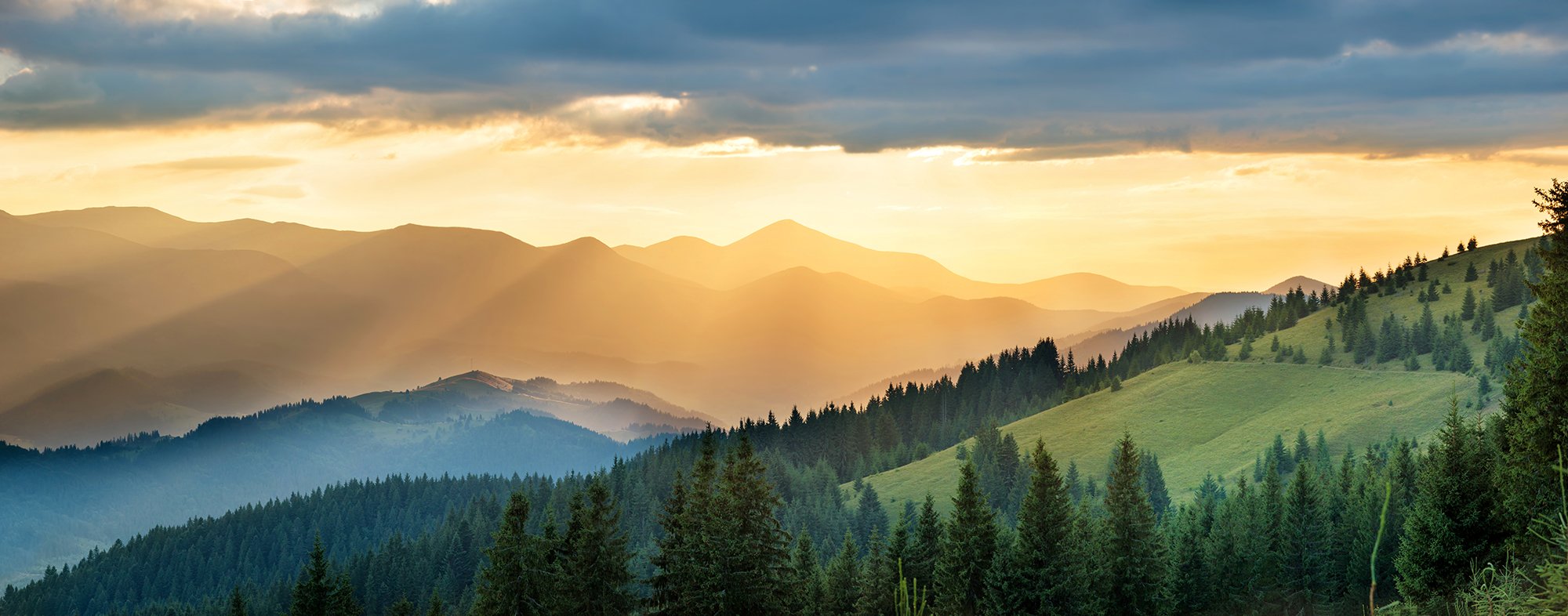
2021-2022
Notes from the Open Path
Notes from the Open Path - 2022
The Dark of the Year
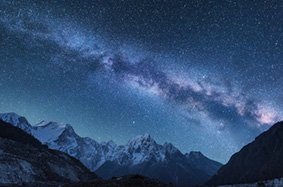
D E C E M B E R 2 0 2 2
Now we come to the dark of the year, the long nights and the silence of the stars. We feel how old the earth is, and how small we are. Ages upon ages of us have come and gone. Archeologists brush the dust from bones that look like ours. An old loneliness presses on our hearts, the ancient ache of our species adrift in an indifferent night, calling into the dark and hearing nothing back. We know we’re falling toward our deaths along with everything and everyone we care about, and there is nothing to be done.
Meanwhile the mountains above us sweep through the night. They’re not lonely. They know what is happening. If they could, they would bend down to us and say —
Children of Earth, you are home. Your home is the radiant universe, this holy mystery that birthed you. Your loneliness is your cry of longing for that home, and it is here. You are home.
Yes, whatever comes, goes, but coming and going are not really coming and going. Every evening is a dawn somewhere, every dawn an evening. We mountains come and go, like your breathing, and nothing is lost. The dark inside of us, above and below us, is alive with transparent holy light. Dark and light are not two.
Children, there is a wondrous loving holiness everywhere, luminous within all that your two eyes see. You know it but you can’t remember. The night is a cathedral of light. What you think is death is a door. When you go through it you will remember what you are, and your grief will vanish into joy.
Out of the luminous dark our universe home is made, made of a love that has no opposite, no beginning or end. Love bursts into form, into you, into us, returning from form in time without going anywhere. Time is its illusion, its make-believe, its playground.
We mountains know about time. Heaved from the earth, worn by rain and wind, witness of countless days and nights, we know about time and the timelessness it comes from. Trust us when we tell you that infinite joy ignites this timeless moment and fills all of space, even the darkest places, even your loneliness.
Children of Earth, you are wondrous, holy, and inseparable from all. You are blessed — so bless! You are made of love — so love!
In the dark of the year, we light candles. A small light in our homes to praise the light of the dark. We embrace each other, thankful for the holiness within the embrace, within each other. We raise our glasses and touch them together, and the little clink is heard throughout the universe.
Tribute to Pierre Delattre

N O V E M B E R 2 0 2 2
Dear Pierre,
I’ve been crying off and on all morning since Nancy told me you had died. My head feels like a wadded-up tissue. I don’t really know why I should be crying about it — after all, you lived 92 years and in that time managed to live a dozen lives for every one of ours. I’d like to say you were larger than life, but I know that would make you wince. Certainly you are now, larger than this walking talking life anyway.
I’ve just decided I’m not going to believe it. It’s not true that you’ll never read these words. I’m going to pretend that you’re right here, right inside me even. You can have my eyes. You can have this breath I’m breathing — better you than me anyway.
This grieving makes me crazier than usual. I feel like I’m crying not just for you but for everyone I’ve ever loved who has died, and even for everyone I love who hasn’t died, but will. They all come to my tears.
It’s not that death is so bad, you and I agreed on that long ago. It’s just that the happy delight of our loving each other has turned into an ache so wide it goes dark at the ends.
My mother told me she didn’t want anyone around when she died. She said, “Death is a private thing.” That’s true, but I’m thankful you had Nancy holding you in her arms when you closed your eyes and went private. She held you for all of us, and let you go. You caution me not to get maudlin now, stop blowing your nose. Okay, I’ll try. But something should mark this moment, shouldn’t it? I want to tell everyone I know about who you are, or were, as it were. How funny and easy-going you were in your vast erudition. How generous and loving and happy. You, the Beatnik Priest back in the day running a legendary coffee house in North Beach where Ferlinghetti, Snyder, Rexroth, Kerouac, Brautigan, Ginsberg howled and murmured. You, the professor of creative writing who surprised generations of young students with your expansive love of words and spirit. You, the failure and winner, novelist and poet, man of a thousand stories, Saami shaman, honorary Sufi, laughter maker, husband, father, grandfather, great-grandfather, playing your flute up there on a rock.
But I can’t do you justice this way. Your friend Terry Belen wrote a beautiful tribute to you on your website – much better than I can. In it he said that you once told him, “My aim is to create as much happiness, beauty and love through my art as I possibly can.”
And you did, old man, you did. May I share a few of your blessed paintings here, so they can create a little more happiness, beauty and love? (I assume that nod was a yes.)
How you feasted on life! Celebrated it, made more of it, laughed at our absurdities and loved us anyway! Somehow you remained humble even while you exulted in your so prolific creative genius, spinning out paintings, novels, poetry and voluminous correspondence encouraging the creativity and spirit of others. You told me once that what kept you sane, besides your exquisite love for Nancy and the beauty of the wild country you two hiked in each day, were the notes of Bach at his clavier that filled your studio as you worked.
And how was it to die, my gentle friend? After all that we spoke together about death, your wordlessness now tells me the most. I imagine you must have waved to us one last, poignant, loving wave and then turned to join the great happiness behind all this, the love that ignites everything everywhere. You went easy, ready to be home first, before the rest of us. I once told you that if I died first I’d decorate heaven with your paintings to welcome you when you arrived. You said, “Don’t bother. Chagall already has that covered.”
But seriously, if there’s anything to those stories about holy figures and loved ones coming to greet you when you die, when my time comes could you show up and give me your hand? That’d make me happy. I have a feeling that’s how you are now, happy.
How to Survive the Apocalypse

O C T O B E R 2 0 2 2
• Wake up early
• Get out of your way
• Don’t lock your doors
• Share what you have
• Don’t try to put the world back to the way it was
• Ask for help
• Complain less, love more
• Stay steady
• Trade, don't steal
• Do what is obvious
• Take zoo animals back to their homes
• Tear down tall buildings
• Don’t be rich
• Don’t follow orders
• Make music without electricity
• Play without keeping score
• Get your hands dirty
• Work next to children
• Protect libraries
• Live lean
• Don’t worry about dying
• Pretend the air is God
• Feed the ground
• Pray into moving water
• Build temples in forests
• In the evenings tell good stories
• Give America back to the Indians
• Pay reparations, never enough
• Don’t make gunpowder
• Don’t be smug
• Love anyone you want
• Make things beautiful this time
• Add to this list
The Middle of the Sky – A Practice

S E P T E M B E R 2 0 2 2
At the heart of Sufi praxis is the recurrent theme called fana, often translated as “annihilation of the self.” A better translation might be “releasing identification with the sense of self,” for the “self” is not something that actually exists. As Ibn ‘Arabi points out, “How can a thing that does not exist try to get rid of its existence? How could a thing that is not, become nothing?”
In a recent Notes from the Open Path (“Selflessness,” May, 2022) I suggested a simple practice for recognizing our innate absence of self: Simply be present, right now. When you can relax knowingly in the present moment you interrupt the habit of assembling a “self” — as I wrote, “You’re just here, without being you.”
Admittedly, our recognition in these clear moments usually only lasts a few seconds before we assume our identity again as the “me” who narrates its thought-stream and who may feel beleaguered by its litany of emotions and old traumas. Yet even these short reprieves can serve to relax the habit of situating ourselves as a separate “self.” As the saying goes, “Little moments, many times.”
Another practice in this vein, also deceptively simple, I call “the Middle of the Sky.” I’ve taken this phrase from a passage in one of Keith Dowman’s extraordinary books (Dzogchen Busuku) in which he describes the experience of emerging from profound contemplation of intrinsic presence. At that moment, he writes, “our experience is like the middle of the sky...”
This little phrase, “like the middle of the sky,” can offer our crowded minds an immediate, spontaneous recognition — a remembrance — of our true nature. It’s not complicated. It doesn’t require repetition or any manipulation of our consciousness. Simply take a moment and see that your present-moment “self” — your being in the moment — is like the middle of the sky: clear, non-located, spacious, and undefinable. There’s no need to do anything with that recognition, or to make it more than it is, or to understand it.
You may experience this as having a slight kinesthetic quality — as if the space behind your eyes is like the middle of the sky — and your heart center, and each breath entering your body — the middle of the sky. Clear, non-located, spacious, and undefinable.
Then let it be. Relax any attempt to maintain or repeat whatever you experience as “the middle of the sky.” This is a subtle place for all of us — we experience a moment of freedom from the illusion of self and we get attached to that experience, we want more of it. Just let it be.
Then, occasionally, when your mind gets crowded with self-thoughts and with emotional pressures and judgments, you may remember this phrase — the middle of the sky — and it may once again open the window of your being to the fresh morning air that you are.
How to Complain
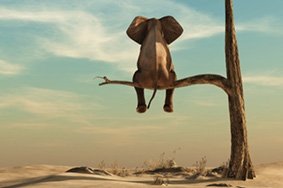
A U G U S T 2 0 2 2
We humans complain a lot.
Imagine the vast cacophonous jumble of all the complaints being felt, thought, written, and spoken right now by people around the world — what a sound that would be! Enough to make the angels cover their ears and fly away!
Like words for snow, we’ve got dozens of ways to say “complain”:
to find fault
to criticize
to blame
to grouse
to peeve
to kvetch
to grumble
to whinge
to whine
to belly ache
to crab
to rail
to moan
to carp
to nag
to chide
to gripe
Now with the internet and social media, the ionosphere is virtually humming with our complaints. It doesn’t matter which political party or ideology is doing the complaining, we’re all doing it. And not only with the big societal issues — our capacity for complaining shows up every day in our personal lives. Take note today how many times you complain, silently or out loud, about the way things are — it’s humbling to admit. Reminds me of the old song:
O life is a toil and love is a trouble,
and beauty it fades and riches they flee,
prices they double and pleasures they dwindle,
and nothing is as I could wish it to be.
Humor aside, it’s completely reasonable to recognize injustice and disharmony in the way things are. When we call out the people and institutions that maintain inequality, racism, patriarchy, war, and the heedlessness with which our species is defiling the planet, these are all good reasons for lodging a “complaint” — though I suspect that all complaints are thought to be reasonable by those complaining, no matter how off the wall we think they are. This is particularly obvious in the little complaints we have, or are subject to, in our personal lives. When your husband complains about something you’ve neglected to do, he thinks he’s being reasonable, while you think he’s not.
Here we can see the dead-end of simply complaining. Complaining polarizes. It sets up the complainer as the righteous one and categorizes the person or structure that’s criticized as the bad one, and stops there.
In her essay on William Blake, Maria Popova writes:
"William Blake…knew what we all eventually realize, if we are awake and courageous enough: that the best way — and the only effective way — to complain about the way things are is to make new and better things, untested and unexampled things, things that spring from the gravity of creative conviction and drag the status quo like a tide toward some new horizon."
“The only effective way to complain about the way things are is to make new and better things.” If things are unjust, be just. If things are unkind, be kind. If things are polarizing, reach out.
When I catch myself complaining, whether silently or out loud, I ask myself, “What can you do creatively with that?” It’s an uncompromising question, and too often I fail to ask it. But when I do ask it, I feel my self-positioning melt. I’m no longer the one who is “right” and the other is “wrong.” The conditions that have made any situation come to be are so vast that ascribing blame is fruitless. Just get creative. Make things a little better, however you can. Make new.
In the flow of our personal relationships, this guidance can work wonders, transforming moments of conflict or misunderstanding into something new. When our complaints are about injustice on a larger scale — racism or violence or inequality for example — we can still respond creatively, though we may not see the fruits of our action. As Krishna said to Arjuna in the Bhagavad Gita, “Do what you do but leave the fruits of your action to me.”
After 9/11, when trust between the Muslim world and the West was shattered, my wife Rabia and I travelled for years to Iraq, Iran, Syria, Afghanistan, and Palestine to bear witness. We were under no illusion that our work would change the course of events, but that wasn’t the point. Our journeys turned the polarizing “complaints” we felt into something creative.
An old woman I know spends every Wednesday volunteering at the local food bank. My daughter and her husband took in a Mexican family seeking asylum. Another dear friend makes herself available to sit with the dying and to care for those who are grieving. Another sits up in bed every morning and writes a poem to touch the world more deeply. Another prays. The ways we can respond to our hurting world are endless. Our complaints may help us notice what’s happening and how we feel about it, but that’s just the beginning. Then we get creative.
Faith-Mind

J U L Y 2 0 2 2
[Note:The following essay is adapted from a talk Pir Elias gave during the recent online retreat “Just This.”]
The title of the Hsin Hsin Ming, the enigmatic 6th Century text from the Chan tradition, is typically translated as: Verses on Absolute Trust; Engraving Trust in the Heart; Verses on the Faith-Mind, along with other variations. The meaning of “trust” or “faith” here is not fish3intended as belief in a religious conception of some kind — belief or faith in God, Allah, Buddha, or any religious narrative — it is a faith so intimate that there is no intervention of a storyline or icon upon which to have faith. Similarly, the word “mind” in the title refers not to our rational mind but to awareness itself, the immediate heart-presence of our nature.
The text of the Hsin Hsin Ming takes this even further when it says: Faith and mind are not two. Not-two is faith-mind.
Faith-mind. What is it? How can we realize it? In a way, our faith-mind is already present in us right now and there’s nothing we need to do to make it happen. We have faith that the breath we are breathing this moment will occur by itself and will provide us with the oxygen we need to live. We have faith that we can understand these words. If we reach for a cup of tea, we have faith that our hand will find the teacup handle without difficulty.
The fundamental nature of faith-mind doesn’t imply that outer forms of religious faith are false. In our not-so-easy immersion into human being-ness, religious faith can be a profound support as we seek to release our fears, self-preoccupation, and sense of separation. But finally, awakening from the dream of separation, the particulars of religious narratives vanish. All naming ceases. It must. Face to face with God, there is no God, no me, no you.
This is how I understand faith-mind. It’s immediate and inherent in the moment. As many of you who are reading this know well, opening to the nature of faith-mind happens spontaneously as we learn to relax the sense of being a “me” — the one who likes this and doesn’t like that, the one who has opinions, the one who wants to be a better person, the one who wants to be respected, seen, or who wants to matter. In fact, faith-mind is exactly what allows us to relax from this identification and simply be present in the present moment, without attachment to memories, thoughts, hopes or fears — just here. We realize that our presence happens all by itself, and we can have faith in that. This is faith-mind. Absolute trust.
From this space of simple, unadorned presence, we know we’re safe. Indeed, there’s no “me” to be safe or unsafe. We simply are faith-mind.
I realize this kind of talk can sound a bit other-worldly, abstract, and disconnected from our daily concerns, but that’s not the nature of faith-mind. Think of the faith-mind of Han-Shan, the crazy-wisdom mountain poet who lived at about the same time that the Hsin Hsin Ming was written. In his poems he tells how he simply lets heaven and earth go about their changes, he lets the sounds of nature purify his ears, he doesn’t worry or fear. He’s at ease with following his karma through, finished with a tangled, hung-up mind, writing his poems, laughing with his old monk friend Shih-te, taking whatever comes. His faith-mind is natural and uncomplicated. He knows he’s safe.
What does that mean – safe?
It means that he knows, all the way through his faith-mind, that this spacious awake presence we are is not something that comes and goes. It’s the very nature of reality, and we're inseparable from it. Old Han Shan was no different from us. Like him, we too can wander at ease, effortless and fearless in the assurance of faith-mind. The universe’s spontaneity is ours. Like him, we are connected to everything, whole. The body of the universe is our body.
We can wander in this life with the faith-mind of a Han Shan, a Buddha, a Jesus, a free woman, a free man. We can love and care for this beautiful world and all its beings with compassion and tenderness, with a happy, carefree heart. Faith-mind is ours — not-two!
I know that when I carry on like this, there’s often a little “but” that sails into peoples’ minds: But I’m NOT safe, not really – so many terrible things could happen – my children could get hurt or die, my house could burn down, I could lose everything that I love! Yes, that’s true. Anything can happen and we know it. A terminal diagnosis could come tomorrow. Pain, sickness, and death are just a roll of the dice away.
So how can we speak of being safe, of living in faith-mind without fear? Is it really possible? Is there some magic to protect us? No, there’s no magic, there’s nothing to protect us from loss. As we know all too well: everyone we love, everything we value, everything we have ever been given — our bodies, our parents and children, our friends, comforts, good works, this beautiful natural world — all of it will one day be taken from us.
That’s how it is here. There’s a sadness that comes with this life that we can’t avoid, nor should we try. It’s the cello sound of that which we love, passing. If we resist knowing that sadness, we diminish our lives. When we don’t resist it, when our faith-mind allows the cello’s melody into our souls, our lives win a measure of fineness and depth, a nobility even — the quiet nobility of being mortal.
But of course, this tender sadness that comes with living and loving is not the whole story. In the end, thankfulness transcends grief. The great honor of being human and to have been given all these chances to love is evidence of something wholly good that’s inherent in this moment and in the nature of reality, and our faith-mind knows it.
Love is the Highest Ground

J U N E 2 0 2 2
This week in America nineteen little children were shot dead in a classroom. The week before ten innocent people were gunned down in a grocery store. All the while Ukrainians and Russians were killing each other in muddy fields. We hear this, we know it’s happening, and we don’t know what to do.
These atrocities are in today’s news, but they’re not new. We humans are good at hurting and killing each other. It’s estimated that during the An Lushan Rebellion in China (755-763 AD) 36 million people were killed. The Taiping Rebellion in China (1850-1864): 25 million. World War I (1914-1918): 24 million. World War II (1939-1945): 70 million.
Our minds blur at these statistics. How can we comprehend the violence and suffering within those abstract numbers? Nineteen children. 70 million men, women, children. Each one a tender life like ours.
Given some distance in time and space, victims and perpetrators blend into one immense tragedy. For whatever the reasons the An Lushan Rebellion was fought, those reasons fade in the stark reality of 36 million dead on all sides. The teenager who shot the little children this week was a victim as well as a perpetrator. That’s not an excuse, it’s just a fact. Every cruel act reveals how lost the perpetrator is. Tragedy encompasses all of it.
Seeing the enormity of the human tragedy like this — even getting just a glimpse of it — can drop us into numbness, or worse, into depression, nihilism, and misanthropy. Is there any other way to be present to the fearful meanness of our species? How can we hold all this interminable suffering?
We need to ask these questions — each one of us. On what ground can we stand as members of the same human species that perpetrates so much hatred, and that suffers its unending consequences?
To me, the answer is clear, though not at all easy to express. If we do not stand on the ground of love we will perish, personally and collectively. Love is the highest ground — groundless and grounded at the same time, beyond the dualities of good and bad and all the judgments that go with them, and yet present in the moment to the hard suffering of our people. It’s the embrace of Jesus or the Buddha as they hold the world. It’s unreasonable. It’s love that doesn’t depend on our earthly conclusions and verdicts.
Perhaps this great love is close to what the poet Galway Kinnel meant when he wrote, “the dream of all poems and the text of all loves” is “tenderness toward existence.” That’s the love that is called for as we behold, and try to hold, the tragedy of our species. I remember years ago at a conference hearing Mother Teresa say in her frail voice, “Love until it hurts.” That, too, may be a clue to answering these hard questions. The love that is called for is not comfortable, and it’s not something we "do." It’s bigger than us. I want to say it’s divine, but that makes it sound distant, and it’s not distant — it’s real. As Trungpa Rinpoche remarked, “When tenderness tinged with sadness touches our heart, we know that we are in contact with reality.”
I’m not sure this holy, painful, tender love will make things better, but that’s not the point. The point is to not turn away, to be this love even as we witness its absence in the human world. As our species and the life of our whole planet face existential threats, may we find the grace to love like this — wider, deeper, unreasonably, until the end of our days.
NOTE: I’ve borrowed the title of this piece, “Love is the Highest Ground,” from the refrain of a song by my friend the German rock musician Robby Baier. If you’d like to hear the song you can do so by clicking here.
Selflessness
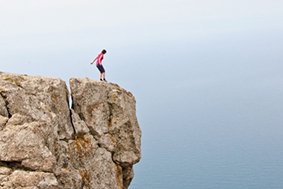
M A Y 2 0 2 2
No matter what spiritual path you take — Sufi, Buddhist, Christian, Jewish, Muslim, Taoist, Advaita, Dzogchen — one day you arrive at a sheer cliff where the path ends.
cliff hangerAt that precipice you face a seeming void: the voiding of your self. It can be a scary place, and most of us have had the experience of turning around at that point and making camp back in the familiar hills of our specific path, to be assured by its practices, stories, and promises. After all, who in their right mind would step off that cliff? There must be another way around! If I want awakening, enlightenment, freedom — if I want to be in God’s presence — I want to be there when it happens, and not voided in some spacey emptiness.
It's not surprising there is confusion about this. Selflessness, ego-death, egolessness, fana (the Sufi term), psychic death (the Jungian term), self-transcendence, self-surrender, the dark night of the soul — however it’s been described — the precipice and what it represents feels like a threat to our sense of rootedness as existent beings. It seems only natural to withdraw from its edge.
Since birth we’ve struggled to establish our moorings in this reality by identifying our “self” with various layers of our experience, whether it be our body, our gender, ethnicity, religion, opinions, or other more subtle forms of identification. Of course, there’s some utility to this, at least when we can hold our self-identifications lightly. But when we hold them tightly, when we assume that what we identify ourselves with represents the truth of what we are, we set ourselves up for conflict and suffering.
We may have heard this expressed a thousand times in the teachings of our spiritual path, and we may accept it intellectually, but the obliteration we fear as we waver on the precipice of selflessness can still make us pull back from opening into its spaciousness.
There’s a simple way to practice relaxing our grip on our self-sense that’s available to us at every moment — if we can recognize it for what it is. We don’t have to be in a refined state of meditation or self-analysis; it’s an opening offered to us continuously and it doesn’t take any preparation to experience it. Simply be present, right now. It’s easy because it’s already given to us. There’s nothing we have to do to make it happen.
Notice that when you turn your attention to the presence of this very moment, there’s a little gap. It may only last for a few seconds. It’s when you relax from doing anything at all, when you stop reading these words, when you’re in-between thoughts and you’re not busy judging what just happened, or planning what might happen next.
Notice that in this gap there’s no sense of “you.” Your memories are not there, your language is not there, your attitudes about things are not there. Of course, you could bring up a memory, or a word in your language, or an attitude you have, but in the simple presence of this moment, none of that is present. Even your name is absent, even your gender, even your religion — there’s just this empty, open, clear moment, and it’s selfless.
Learning to relax knowingly in this present moment, even for periods of a few seconds, purifies us. It’s like when we were kids on a hot summer day in the back seat of the car, rolling down the window and letting the wind blow against our face. Eyes closed, smiling.
It doesn’t take being an advanced practitioner to let this happen. It’s not even scary, since this gap is familiar and doesn’t carry the big name of “ego-death” with it. For a moment or two, you know yourself without your identities and attitudes — you’re just here, without being “you.” Empty and fresh and present.
These little moments of purification are available to us at any time, and the more we refresh ourselves in them the easier it is for us to realize that selflessness is not something frightening or obliterating. It’s our natural state, and we’ve known it all along.
Springtime Reverie
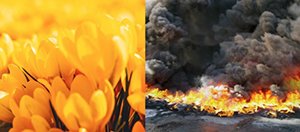
A P R I L 2 0 2 2
Walking out your door on a fine spring morning, the smells of the wet earth breathing into your body, for a moment without thinking, you feel the madness of spring inside you, you feel it coming up from the ground and moving through the air and moving right through you with its happy resurgence and it makes you want to sing, it makes you want to leave behind your little troubles and the world’s big troubles and just be glad, and you are, for the moment, unreasonably glad and as fresh and as optimistic as it is, as if you were a child again blossoming out of time, carefree and giddy, and you wish you could skip or fly down the road or up with the flitting birds in the branches and it feels like you are indeed flying with them, your mind free from itself, free from being grownup and deliberate, and you want it to last, you want it to be this way forever because it feels so true, like a hint of a farther joy beyond even the springtime’s delirium, a taste of that holy giving-ness that asks nothing for itself, the simple gladness of being, beyond meaning, beyond wanting, a whiff of that place without location, inside you, outside you, beautiful as the sky, as tender as your heart, realer than real, and you know it’s true, but all of this lasts not longer than from here to there when again images from the morning’s news come unbidden to your mind, the sharp flash you saw of a bomb in Ukraine, the face of distress on a mother huddled with her child, and you stop, caught between the spring’s indifferent joy and the world’s hurt, and you don’t know what to do, or how to be, how to hold both the grinding injustice and the fragrant spring, the grief of your people and the happy freedom of your heart, and now you feel sorry for having felt so glad, so carefree just a moment ago, so in love with the spring, and you wonder, how can it be, how could God make springtime and devastation both in the same universe, how could it be that all is well and isn’t at the same time, how could that impossible little question be answered that’s plagued humanity ever since we started both praising the world and wanting to be free of its hurt, and you don’t know an answer, and there, right under a blooming tree knowing an explosion was ripping apart a home in Ukraine, you ask, you wonder, what can I do to ease the faraway pain and still not blame the spring for its gladness, you ask, you wonder, and then you do the only thing that’s left to do, you raise your eyes and bless the spring and bless the hurt and turn away from neither.
The Soul of the World, 2022
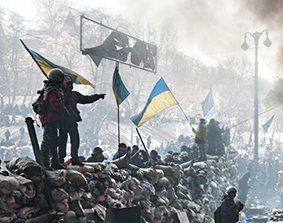
M A R C H 2 0 2 2
You wake up with an image you saw on the news yesterday: a shaky cellphone video of a Russian missile slamming into the side of an apartment building in Kyiv. You imagine the aftermath, the dangling light fixtures, the kitchen cabinets hanging on ukrainewalls exposed to the day, peoples’ private nests blown open for all to see. You want to stop seeing, but you can’t. You imagine there’s a child in a back bedroom, thrown from her bed, making her way through the debris to the kitchen doorway to find her parents. You see her smudged face looking out at the city where the kitchen used to be. But then you don’t see her — for a moment you see what she’s seeing — as if you are her, rubbing soot from your eyes.
Praise that shaky cellphone and the one who held it! Now our eyes are there too, in Kyiv and Kharkiv, on the Minneapolis asphalt with George Floyd, in Charleston, Portland, Tehran, Moscow, Yangon. Now we are bearing witness in a new way, up close and personal even though we’re safely in our homes far from the brutality and chaos. There’s an immediacy and rawness to these cellphone videos — we hear the gasps and shouts of the people there, we feel them — these are people like us holding up their cellphones to the violent moment so we can witness with them, so we can feel that what’s happening to them is also happening to us.
These humble videos (along, of course, with on-the-ground news reports from brave journalists) are a powerful force touching the souls of billions of people throughout the world. That we’re disturbed by what we see, that we share a common revulsion at the senseless killing and destruction, says something about the nature of our billions of souls. To me, it says that we share a soulness in common, a sensitivity and reverence for life that’s built-in to our being human — though for some that soul-depth is tragically occluded by fear and greed.
What is it, this soulness we share? Could it be that all our private souls are sprouts from one vast soul — a world soul — like a forest of individual aspen trees emerging from the same living network of roots? However we conceive it, as “soul” or “sensitivity” or “life-reverence,” it reveals a mutuality of caring among us that’s intensified now by the interconnectivity of our eyes. We’re realizing we’re not as separate as we thought. Our mutuality of caring, this inner soulness we share, is now wired outwardly in a way that’s never happened before: billions of cellphones linked by a neuronal web throughout the world — inner soul and outer eyes revealing what matters to us.
But then, when we bear witness like this, watching the news reports and shaky videos far removed from the violence, we can feel impotent and useless. “I can’t do anything to help!” we cry to ourselves.
Is that true? Are we helpless?
I believe the very fact that we see what’s happening, that we bear witness together even though we can’t do anything to affect the situation outwardly, is a radical form of activism. We are connecting with and deepening the evolving soul of the world. We are sensitizing the conscience of humanity. Though it may seem insignificant, our dismay with bombs dropping on Ukrainian cities is a powerful action. Without it, without our caring, the human spirit would be diminished.
Even though it hurts to bear witness like this, even though we want to turn away, our anonymous solidarity with those who are suffering, wherever they are and whoever they may be, ennobles the vast soul of the world and makes possible the coming of peace.
The Practice of Not Knowing
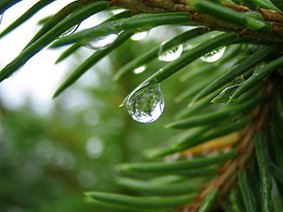
F E B R U A R Y 2 0 2 2
Walking on a mountain trail on an early winter morning, I came upon a large rock where I could sit awhile and rest. Patches of snow lay under the pinion pines; the sun hadn’t found them yet. A sparkle caught my eye — a drop of water forming at the pine needle droptip of a pine needle near me — meltwater coming from a little clump of snow higher up the branch. The drop slowly grew fatter, glistening in the sunlight, and then let go. Another drop began to form.
I had just been marveling about the mysterious capacity of my mind to know things — how my mind can distinguish this tree from that tree, and how it’s able to name them and know something about what they are. It was marvelous, and yet — could it be that the very skill of naming and knowing was also limiting my experience — of the things of the world, of other people, of the Real — in ways that were invisible to me?
I watched the next drop of water form on the tip of the pine needle. What is this, this drop of water? What is it? Of course, I knew its name and that it came from melting snow, that came from the clouds, that came from… I knew about the whole hydrologic cycle, I knew water was made up of hydrogen and oxygen, but… what is it, really?
I didn’t know. It was a mystery to me, how it could be what it is and not something else, or where it had been or where it was going. I realized I didn’t know anything about its origins as water or its age or destiny, or how its essence performed all the magic that water is capable of. What was its essence? Did it have one?
I looked up at the tree. All by itself, my bewilderment about the nature of the little drop of water expanded to include the tree. What is this, this “tree?” Do I know? And the forest it’s part of? What is it?
I looked around. Everything looked like it normally did — trees, rocks, patches of snow, the careless jumble of the forest — and yet there was something else, something appearing out of my bewilderment about the nature of these presences I was with — a sense of them that was both vivid and indescribable. Asking what is it? and admitting I didn’t know, seemed to relax my mind’s hold on things. My mind became humble and a little shy. It stopped trying to be first.
What arrived in its place, this “indescribable vividness,” felt familiar in the way a home-place feels familiar, ordinary, and natural. Though I didn’t really know what the drop of water was, or the tree, or the forest, I belonged with them. Instead of my internal commentary and “knowings,” there was a kind of clear spaciousness that we shared, a wholeness.
The forest was still full of forest sounds, yet it was silent and spacious. My body was still full of sensations, yet it too was silent and spacious. Everything was present, together.
It didn’t take long before I wondered: What about God, the Divine, the Real? What is It? What is all This? Though I’ve spent a lifetime with these questions, in that moment of asking I had to admit I don’t know.
“Not knowing is most intimate,” says the turning phrase of a Zen koan. Not knowing is most intimate. Intimacy may be the best word to describe what is revealed when the mind gets shy like this — the intimacy of “two” being connected without twoness, while remaining distinctly two.
I remembered the famous prayer of Mohammed’s that’s always seemed a little odd to me: “Oh Lord, increase my perplexity concerning Thee!” Perplexity, bewilderment, uncertainty, not knowing — these words that usually imply a disturbing state of mind to be overcome are inviting us into a different kind of “knowing” beyond the mind’s assertions. “The whole affair of God,” writes Ibn Arabi, “is perplexity.”
Most of the attempts of the world’s mystical traditions that try to describe the Divine, the One, the Real, the Dharmakaya, revert to paradox or to the negation of any assertion — leaving us in a state of perplexity. When Ramana Maharshi asked someone, Who are you? he would respond to any answer with the words, Neti neti, “not that, not that.” The Buddha, pointing to the nature of things, said, Not two. Not one. The remembrance (zikr) of Sufis, la ilaha ila’llah, means “No God but God.” The positive or cataphatic theologies that assert God’s attributes and qualities (God is good, etc.,) were inevitably met with negative or apophatic theologies — apophatic, a word that literally means “to un-say God.”
Not knowing, as a practice, is a move that’s always available to us. When I look at a mountain and ask, What is it? and admit I don’t really know what its mountain-ness is, the humility of that admission lets me be in its presence in a new way. When I meet someone and ask, Who is she, really? Who is he, really? and admit I don’t truly know who this being is or what has created them to be what they are, I become open to their presence in a new way.
A spaciousness comes, a lightness of being that brings with it a sense of amazement and awe — what is this water drop, this person, this moment, this awareness of awareness? In the absence of answers comes wonder! Soon the questions themselves vanish. This is why Chan Buddhists describe this practice of not knowing, of perplexity, as wonderment. A gentle unfolding of experience in wonderment. Perhaps when we were little children we could access wonderment without having to ask what a thing was or admit we didn’t know; our minds were not yet so dominant or so focused on survival. Older now, with all our predispositions of knowing and judging and opinion-making, we can be happy to play with this simple practice of not knowing, asking What is it? — and not know.
Kindly Bent to Ease Us
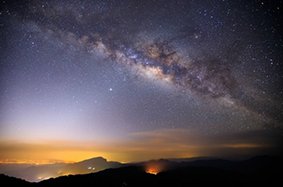
J A N U A R Y 2 0 2 2
Here we are, wishing each other Happy New Year while there’s a heavy cloud of foreboding in the air. Greta Thunberg is dawnangry and we know why. Children are walking in the streets holding signs, “You’re stealing our future from us!” Massive corporations and the rich are draining the wealth of communities. The commons — the air, the soil, the forests, and oceans — are being despoiled for private gain. Disinformation and distrust are fragmenting nations. The growth economy has cancer but won’t admit it. The sixth mass extinction of species is happening on our watch. Happy New Year!
I frequently hear people say they think humans are an evolutionary mistake, a blight on the planet, a dead end. We’re coming to accept the Hobbesian view that humans are fundamentally selfish and competitive, and that there’s just a veneer of civilization holding back our greedy, self-centered behaviors. It seems we’re losing hope that we’re capable of coming together, or that we have the collective will to clean up the mess we’re making.
The trouble with this view is that it ignores the obvious. We humans, in our everyday interactions, are most often kind and cooperative, not selfish or mean. Just think of the people you encounter every day, some known and some unknown — are they not trying to do their best to be kind and helpful? The lady at the post office with whom you make little jokes, the rough-looking young guy holding the door for you at the hardware store, the old friend who you haven’t heard from in years, writing to ask how you’re doing. I’ve been all over the world and the great majority of people I’ve encountered have been kind and well-meaning, or at least wanted to be.
It's that ground of kindness that I’m pointing to here, for I believe that recognizing it will help give us the strength and courage we’ll need in the times to come. When Kurt Vonnegut asked his 20-year-old son, “What is the purpose of life?” his son answered, “To help each other get through it, whatever it is.”
I don’t believe there are many people who want the earth’s diversity of species to be destroyed, or who want our children’s future endangered. Our common desire for well-being runs deep – it’s a source of good will and creativity we can trust as we contend with the magnitude of challenges ahead. Cynicism won’t help us.
Yes, there’s evidence of human selfishness and divisiveness everywhere, that’s true. But I believe there’s even more evidence of human kindness, solidarity, creativity, and resilience, of people caring and reaching out to help others in both everyday simple ways, as well as in the midst of disasters.
I was once in a subway car clattering underground from 125th Street to 59th Street in New York City, a long run between stations. It was the end of the day — everybody had that tired subway look, gazing away from each other. Suddenly the train went black and coasted to a stop in complete darkness. There had been a major electrical blackout that covered the whole region, though none of us knew it. We waited in the darkness, making nervous small-talk. Eventually a conductor came through and told us to climb out of the train and walk along the dim tunnel for nearly a mile to the nearest exit. It wasn’t easy going, following a few winking flashlights in the dark, but everyone helped each other, held each other’s hands, lifted up the ones who tripped — all of us complete strangers taking care of each other as if it was the most natural thing to do.
In his recent book, Humankind — A Hopeful History, the Dutch historian Rutger Bregman tells the story of the Nazi strategy behind the London blitz. Their plan assumed that by bombing civilian population centers, social chaos would erupt, people would act like brutes, and the norms of civil society along with English morale would evaporate. But it didn’t happen. After 80,000 bombs were dropped, the English responded with courage, humor, and caring toward each other. “Crisis brought out not the worst, but the best in people,” Bregman writes. Later in the war, when Churchill used the same strategy of bombing civilian centers in Germany, the German people reacted in the same way — not with chaos, but with mutual help and fortitude.
Bregman’s book contains many stories like this, stories that reveal how our innate tendency toward kindness and trying to do our best to make things better is a tendency that’s hard-wired into us. This is not to ignore the human capacity for violence, meanness, and abuse — that too is obvious, and has its own causes rooted in fear and ignorance. But if we believe the story that people are basically untrustworthy and uncompassionate, I think we’ll have lost perhaps the greatest source of strength available to us as we face the crises that are here, and the worse ones to come. In Anne Frank’s famous words:
“It's a wonder I haven’t abandoned all my ideals, they seem so absurd and impractical. Yet I cling to them because I still believe, in spite of everything, that people are truly good at heart.”
I don’t believe this goodness in the human heart is wishful thinking. Nor do I believe that “goodness” is an anomaly appearing here and there in an otherwise uncaring universe. Our altruistic tendencies, our predilections for kindness and cooperation, arise from the very nature of how this living universe works. We are kind because the whole “interdependent co-arising” of the phenomenal world is kind.
There’s an old Tibetan text by Longchenpa with the evocative title, Kindly Bent to Ease Us, that describes how the entire magic show of phenomena is luminous with compassion and generosity. And whether we call it “goodness of heart” or kindness, compassion, love, or interdependent co-arising, its evidence is everywhere.
When I take a deep breath, the anonymous air enters my body and gives what my body needs. Is that not friendly of it? My hands know how to move to make a cup of tea for me. How kind that knowledge is! My legs stand me up and I don’t know how they do it! All the trillions of cells in my body do their jobs in quiet friendship, cooperating. Even the cells that don’t seem to, the ones that hurt — like the pains in my lower back and my uneven heartbeat — are friendly in their fashion, telling me to take care, you’re not as young as you were, take it easy. At dawn each day we watch how light comes to the world so generously, and then evening comes in its merciful way to give us rest. Indigenous tribes have called the natural world “the giving place.” It is kindly bent to ease us.
When we recognize how intrinsic kindness is to the nature of things and to our own deepest nature, we can take heart. Yes, our forebodings are real, there are hard times coming and we have much good work to do, but we can be sure we have help. There are enormous currents of kindness and benevolence carrying us along, around us and within us. Our prayers and deepest wishes for each other are evidence of this, like every time we say:
Happy New Year!
Sufi Tao
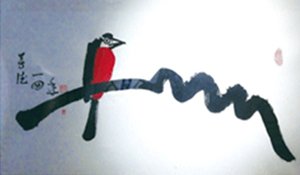
D E C E M B E R 2 0 2 1
Once, a young seeker asked an old Sufi woman, “Mother, tell me, what is the way of the Sufi? What way do you follow?”
She replied:
The way we follow does not lead.
It is like a wind that has no origin
and that seeks no destination.
It flows everywhere without moving,
never straying from this moment.
The way we follow is holy and alive
but to call it a way is to make it a thought,
suitable for the mind but not the heart.
The love-wind we follow teaches without instruction.
It reveals a path without pointing.
Accepting what arises, it holds on to nothing,
holding on to nothing it embraces all things.
Following the way, one is gentle
and does not defend or claim to know.
Not knowing,
one goes the way in wonder.
The way has no abode yet it is home.
In the evening friends gather and sing.
At dawn they go their own way without leaving.
Having no abode they are free.
Free, they are unafraid of rejection and death.
Unafraid, they give comfort to the comfortless.
If someone asks them who they are,
they say, a friend.
The way we follow does not separate or declare,
nor does it draw attention to itself.
Loving, it has no need to possess.
Intimate, its secret remains secret.
Though it is most holy, it is not special.
It belongs to all beings and is never withheld.
No one and nothing is outside of the way,
but few know it.
To know the way is to be the way.
Kind, the way is naturally kind.
Curious, it laughs with amazement.
If you do not know the way, be kind.
If you do not know the way, be curious.
Then like a leaf warmed in the sun,
in autumn you will turn gold, then brittle,
then earth, and never stop living.
The Practice of Living Presence
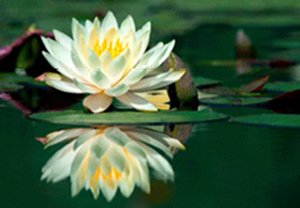
N O V E M B E R 2 0 2 1
A Zen master once said to his students:
In order to have warm human relations, we must pay attention to what is. In other words, we must touch the source of existence. Only then can we take a deep breath; only then can we feel relief. Under all circumstances, we must be rooted in the source of existence.
What does it mean to be rooted in the source of existence? What is this source and how can we know it?
lotusIn my experience, being rooted in the source of existence does not involve the thought-mind or require concentration. What is required is more like an intuitive openness, perhaps comparable to our peripheral vision or our experience of spatial dimensions. It’s a subtle capacity we have, to be able to open ourselves intuitively like this. For me it has a kinesthetic feel to it, as if the back of my head has disappeared, or the space inside my chest has no boundary.
So to benefit from what the Zen master said — under all circumstances, we must be rooted in the source of existence — we will need to allow our intuitive capacity to spread its wings, and not just try to understand conceptually what he’s saying.
The source of existence is immanently present, and it is alive.
Everything we see and feel, including the intimate and ever-changing feelings of our body and the thoughts we think, is inseparable from the source of existence. It is not that there is a source over here making existence over there, or that a source in the past made existence happen now. Existence and its source are immediate; they are happening all at once, and that happening is alive. I’m not referring to carbon-based life here, but to the immanence and impulse and creative becoming-ness that we experience moment to moment as the dynamic of reality.
Existence as we know it is continually changing and moving. It is alive with itself. Quarks appear out of nowhere, light blossoms from stars, our eyes move across the page, cars on the street roll by — everything is flowing forth magically, becoming what has never been before.
To the extent that we can appreciate this aliveness we root ourselves in the source of existence. Again, this is not an intellectual appreciation but an intuitive openness to how everything we perceive shares this blessed aliveness in this moment.
Simultaneous with aliveness and its ever-changing nature, is a numinous, ineffable stillness I call presence (it also has many other names.) Presence is the silent host of all that appears. It is what allows aliveness to flow forth. One way to intuit what I mean by presence is through the analogy of space. Space allows things to show up. If there were no space there would be no possibility for chair, table, or our bodies to appear as they do. Presence is like that, but is even more mysterious since it’s not dimensional in the way we imagine space to be, and yet it is everywhere.
Presence is silence itself, perfectly clear, open, and contentless. It may be difficult for us to understand how these apparent opposites — aliveness and stillness, sound and silence, co-arise as the source of existence, but they do. It’s like what happens when we listen. Our listening is silent, and that silence allows us to hear sounds. In the same way, our most intimate awareness is silent, pure, and clear, and that silent clarity allows existence to appear.
How marvelous, the presence of everything that we perceive, that is alive and changing, is simultaneously still, silent, and unchanging! Inayat Khan speaks of this primordial silence: “…our eyes cannot see it and our ears cannot hear it and our mind cannot perceive it because it is beyond mind, thought, and comprehension.” In this same passage he describes beautifully how we awaken to the silent quality at the source of existence:
This all-pervading, unbroken, inseparable, unlimited, ever-present, omnipotent silence unites with our silence like the meeting of flames.
The Great Silent Presence and our own silent presence meet, and though they were never separate, experiencing their meeting is what roots us in the source of existence.
The Zen master (Katagiri Roshi) begins his instruction with the words, “Under all circumstances” — Under all circumstances, we must be rooted in the source of existence. That’s a tall order. Again and again circumstances find us oblivious to the source of existence, caught up in odd assumptions about what is real and what matters. We need help here. We need to discover ways that we can easily remind ourselves of the living presence that is the source of existence.
To that end, below is an outline of a simple practice that might be helpful. In this version I use breathing as the sensory focal point; you can experiment with other sensations once you get comfortable with the practice. Then you can do it while walking down the street, or eating a meal, or in the midst of a conversation. Having done something like this practice for a few years, I‘ve found that over time it’s become less step-by-step as in this outline, and more fluid and creative. Whereas the practice here takes several minutes, eventually you may find it happens in a few seconds and becomes the kind of effortless kinesthetic movement I mentioned earlier. Good luck!
The Practice of Living Presence
- Sit quietly. Come to rest; body and mind relaxed and alert.
- Bring your attention to your breath. Breathe naturally.
- With your attention on the living, changing nature of your breath, simultaneously open your awareness to the presence in which your breath rises and falls.
- Effortlessly allow your awareness of presence to open to the boundless presence in which your surroundings appear, and in which your body and its sensations, thoughts, and feelings appear.
- Notice that everything that appears moves, everything that arises comes and goes, while presence doesn’t. Recognizing movement in stillness, sound in silence, living presence: this is the key point.
Autumn Light
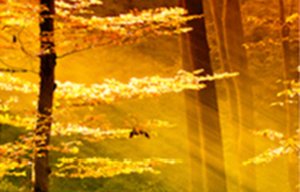
O C T O B E R 2 0 2 1
for Pierre Delattre
Walking through a park you pass an old man sitting on a bench. He’s watching children out on the grass playing and tumbling in the fallen leaves. You see the wrinkles and lines in his old face as you pass. What kind of life carved those lines? Hieroglyphics of stories even he probably can’t remember. On a whim you sit on a bench down the path across from him, and wait.
autumn lightYou wonder about him. He just sits there watching the children, or looking up into the trees. You wonder what he’s thinking. Is he thinking? Maybe not. Does he have ambitions? Does he make plans?
A little breeze scatters leaves along the path, and more leaves flutter down from the branches to join them. You wonder what it’s like to be old. You decide to pretend you’re as old as he is, with the majority of your life behind you — just another old person on a bench in a park somewhere on an autumn afternoon.
You imagine first that being old must feel a little cranky, that you’ll be annoyed that your youth has passed and that your body hurts and no one cares about you. But then you look over at the old man and notice he has a slight smile on his lips. He doesn’t look cranky, if anything he looks contented.
So you try feeling that way, contented. You put the same slight smile on your lips. You look lazily out across the park. A thought comes up about your next appointment but you know the appointment is still two hours from now, plenty of time, and you already know what needs to be accomplished when the time comes. Other thoughts float by but you’re an old person now and you just pretend those thoughts don’t matter. They’re not really interesting anyway.
You invite yourself to feel fine just sitting there with nothing needing to be done. Just sitting, enjoying the autumn light sifting through the trees. At first it feels a little odd, this sitting quietly without the familiar pressure of wanting to distract yourself or get the next thing done. But you keep on with the experiment, letting yourself feel old, contented and at ease.
And then something extraordinary happens, all by itself. You couldn’t explain it if you tried. It’s as if the space between things goes right through things, right through you and the park and the old man and the children playing. You sense a spaciousness and closeness that’s so familiar it feels like it’s you, and yet it’s everywhere, completely empty of anything and yet full of everything at the same time. And the autumn light is just the same — the slant of the sun seems like it’s passing through your body and through the trees and the ground, as if everything is transparent even though everything’s right here too.
And there’s something else, something even more intimate. The familiar place that’s felt like the “you” inside of you, the you behind your eyes, the place of you that agrees with itself and quarrels with itself and makes judgments about everything, that place is suddenly so sweetly quiet and wide open and transparent too, just like space. You’ve never felt anything like this before. There’s an expansiveness everywhere that’s so vast and at the same time so intimate and lovely. It feels like you’re in love with everything! Your heart has burst open. The enormity of what you’re feeling is so unexpected and beautiful that you wonder if you’re going crazy.
You look down the path at the old man on his bench and see he’s looking at you. He winks.
World Worry
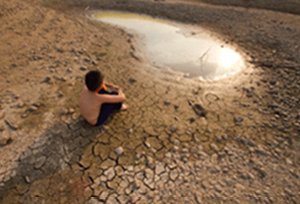
S E P T E M B E R 2 0 2 1
A disturbing litany of disasters confronts us in most woke writings these days, and for good reason: our planet and human civilization are encountering conditions in which the earth’s capacity for nourishing life is endangered at a magnitude unknown in human history. You polar bearsknow the litany: polar bears lost on melting ice floes, songbirds vanishing, soil depleted, poisons in the air and our bodies, countless trillions of plastic fragments floating in all the oceans, forests burning and diseased, extractive industries gouging into mountains, a fierce ambition in human economies to grow past all limits, populations of refugees fleeing from social and climate disruption, and ever-increasing injustice, distrust, polarization, and domination of the many by the few. All of this is stirring in us world worry, a sense of foreboding that is draining the vibrancy of human culture as well as our physical, psychological, and spiritual health. We see a menacing cloud over the future and feel helpless to do anything about it.
World worry is not something we can avoid. Even if we try to shut it out and just devote ourselves to the demands and pleasures of our personal lives, the storm gathering over us and over our children and their children is a portent we can’t ignore for long. While we may realize that world worry is sapping the energy from our lives, at the same time we feel if we don’t worry about what’s coming down, we’ll take no action to forestall it. Releasing our world worry would mean giving in, giving up.
How can we be with this? What is our responsibility in this fateful time? What is asked of us?
And then there’s this troubling question: Can we be awake to the enormous ecological and social disruption that’s happening now and that’s ever increasing — disruption that, I repeat, is on a scale that no generation before us has had to face — can we be awake to it and still live happy, beautiful and fulfilled lives?
There are no easy answers to these questions, and no easy fixes. As the days and years pass, each of us will have to contend with this intractable challenge in a manner suited to our own lives. Here are a few thoughts of my own in response to these questions — culled down to three basic “principles” — offered not as definitive answers, but more as a starting point for your own contemplation and questioning.
Keep an Undefended Heart
In my own life I try to accept my world worry not as a looming horror that makes me want to shut down, but as a “necessary angel” that keeps my heart open. For example, at the moment I’m aware of the 900,000 Syrian refugees escaping the fighting in northwestern Syria; many are without shelter, huddled in the freezing weather. I’ve been to Syria many times and I feel connected to those people. Though I know I can’t really imagine the desperation of a father or a mother trying to keep their children from freezing, or the scale of suffering there (900,000 people!) and everywhere in the world, I know if I close my heart to it, my own life and the greater life I am part of will be diminished. Even though I’m in no position to do anything about their suffering, that very helplessness becomes part of theirs… and somehow within it we share a mutual presence. That might sound like a feeble response that makes no difference, but consider the opposite — if I closed my heart to their suffering, refusing even to be aware that it’s happening, would I not be abandoning those people a second time? My helpless caring matters.
I wonder if the extreme of world worry, when we become overwhelmed by the anxiety of knowing the earth’s life-support systems are collapsing, isn’t in itself a kind of defense, a way to defend our hearts from being present. Being overwhelmed, we curl into anticipatory grief and the certainty that everything’s hopeless.
I think here of the prayer-words of Etty Hillesum a year before she was murdered at Auschwitz: “These are times of terror, my God. Tonight for the first time I stayed awake in the dark, my eyes burning, images of human suffering parading endlessly before me. I am going to promise you one thing, my God, oh, a trifle: I will not let myself weigh down the present day with those fears that the future inspires in me…”
Those are the words of an undefended heart, open to the hurt of the world without letting that hurt crush her heart’s presence. An undefended heart is in this way the requisite condition for survival, maybe not physical survival but survival of the most noble aspect of the human spirit. If, in the end, the earth’s human experiment does fail, at least we will have succumbed with our hearts alive and loving.
Find What Matters
When we experience our world worry not through the lens of fear but through our undefended heart, something very intimate changes in us. Our life comes closer. Worry and despair open into compassion. Our undefended heart reveals to us that we are the world, undivided from it. Then, in the moments of our lives, we do our best to be faithful to what matters. As the novelist Barbara Kingsolver once remarked, “In a world as wrong as this one, all we can do is make things as right as we can.”
Making things “right,” in however small a way, asks that we discover, in each life situation we encounter, what matters. Finding what matters isn’t an intellectual exercise, like making a list. It’s more alive than that, more immediate to our moment-to-moment experience. For example, we might say that “kindness matters,” but the living quality of kindness is something that we must find and open to, again and again, as we live.
Given time, this “finding what matters” becomes a natural, intuitive move. It doesn’t need to be thought about, although sometimes thinking can help us remember what’s at stake. Say you find yourself getting irritable about something — at the moment that you notice your irritability you might ask yourself, “What really matters here?” This question might come verbally like this, or it may be a subtle shift in your heart. Either way, it creates a pause, and in that pause you make things as right as you can.
In my own life I experience this process of “finding what matters” in the day-to-day situations that arise — in how I respond to and care for others, care for my household, care for my health, care for the work I do. In fact, finding what matters is the very yoga I try to follow as I write this essay and look for the next sentence or word. What matters here? In an earlier part of my life when I designed houses for a living, the same questioning guided my design process — what matters here? What is the life that wants to happen here? How can this design be faithful to that?
But finding what matters isn’t only something that’s active in the details of our lives, it can also guide us in their larger trajectory — what work we turn to, how we determine our life's priorities, and what we give our energy to. Here our question about “what matters” resonates deep into the future, not only in our own lives but into the lives of our descendants, into the seventh generation. How will what I devote my life to nourish the life that is to come?
But whether in the details of our lives or in the fundamental directions our lives take, finding and following what matters is the very current that will heal the world. We can be sure of that.
Do the Beautiful
Following what matters is the essence of the Sufi principle of ihsan, which translates as doing the beautiful.* When Dostoyevsky wrote, “Beauty will save the world,” he was saying, among other things, that beauty matters. Here beauty is not simply understood as something that has an aesthetically pleasing appearance. The beautiful act — doing the beautiful — is an act that fits what a situation calls for, an act that arises spontaneously when the heart recognizes what matters. The beautiful act nourishes and calls forth the life that is nascent in a situation.
Doing the beautiful doesn’t come about from thinking or planning. It happens naturally to the degree we have devoted our life to “undefending” our heart and finding what matters. “Let the beauty you love be what you do,” Rumi famously told us, an advice we cannot remember too often. In the context of transforming our world worry — our concern for the perilous condition of the planet and human civilization — into a path of healing, I cannot think of a more succinct instruction.
Here we might find an answer to the question: Can we be awake to the enormous ecological and social disruption that’s happening now and that’s ever increasing, and still live happy, beautiful and fulfilled lives? I believe this is exactly what we must do. I don’t have any illusions about the suffering and loss we are witnessing today, or the magnitude of the threats facing the community of life on earth in the future. But if a world abundant with life is to be seeded by us, it will not grow from anxiety or despair; it will only thrive in the fertile soil of our undefended hearts, finding — and doing — what is beautiful.
*See previous Notes from the Open Path: “Doing the Beautiful,” “Medicine Beauty,” “Beauty Will Save the World,” and the essay “Following Beauty” in Seven Contemplations on Awakening.
Oh!

A U G U S T 2 0 2 1
Imagine this scene… You’ve been visiting a friend who has a cabin near a lake. It’s 2 AM, and not being able to sleep, you wander down to the lake in the dark. No one is around. You walk to the end of the dock that extends out into the lake. Daring yourself, you take off your clothes and stand there in the blackness.
splash HRThe night sky is cloud-covered and dark, no stars. Your body is dark and the water below is dark. The darkness is cool on your skin. You want to dive forward into the air and the dark water, but you are afraid. Even the feeling of your fear is dark.
As you hesitate there, your whole life seems to be compressed into this moment: the way it has felt all these years to be a self, your self, alone in the midst of what’s out there and what comes next. It’s been this way for as long as you can remember: the sense of being you in here, confronting the it out there.
The darkness becomes so intense you withdraw from it into the only safe place you know: your self. But now with a shock you feel your self is just as dark as everything around you. There’s no safe place, no refuge. The darkness goes all the way through.
At that moment you give up. You stop caring about being safe or not being safe. What the hell… without planning or thinking, you dive into the darkness.
Suddenly the intensity of the darkness is overtaken by a silence that is even more intense. Your body, stretching forward in a perfect arc, is enwrapped in silence. For that brief moment suspended over the dark water, the passage of time stops. The silence reveals itself to be without beginning or end, or to have any duration. It goes right through you. You are silence.
And then the world erupts into a crashing, splashing roar of cold water, bubbles, and light flashes churning in the silence that doesn’t move. The coincidence of timeless silence with the coitus of body and water snap the last thread of your old separateness, and as your head surfaces you shout, “Oh!”
“Oh!” is the best of our words. Nearly pre-verbal, nearly without meaning, it is the spontaneous sound of mystic surprise. It is the sound of humility and honor, of welcome, surrender and awe all at once. It is the sound of the nude soul opening into its home light. When Sufis invoke names sacred to them they say, “Ya!” which is their way of saying “Oh!” “Ya Hayy!” — Oh Alive! — “Ya Fatah!” — Oh Openness! Or as Mechtild of Magdeburg sang in her prayers:
Oh burning mountain! Oh chosen sun!
Oh perfect moon! Oh fathomless well!
Oh unattainable height! Oh clearness beyond measure!
Oh wisdom without end! Oh mercy without limit!
It is a sound that fits great choirs of angels in their praise, and a sound that lovers tell no one else. At the moment of our death it may be our last sound. “Oh!”
Could “Oh!” also be our most intimate spiritual practice? Could we let it voice the surprise of our hearts as we wake in the morning, or turn a corner, or see the light in a passing face, or when we hear the news of a plane crash or a bomb going off and wish to offer something to the dying ones — “Oh!” This sound doesn’t even have to be spoken, because before it is a sound it is silence as big as the sky — the silent, blissful, transparent now, ever surprising us with what we are.
In One Form or Another
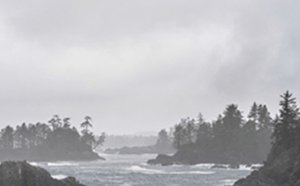
A U G U S T 2 0 2 1
Imagine this scene… You’ve been visiting a friend who has a cabin near a lake. It’s 2 AM, and not being able to sleep, you wander down to the lake in the dark. No one is around. You walk to the end of the dock that extends out into the lake. Daring yourself, you take off your clothes and stand there in the blackness.
splash HRThe night sky is cloud-covered and dark, no stars. Your body is dark and the water below is dark. The darkness is cool on your skin. You want to dive forward into the air and the dark water, but you are afraid. Even the feeling of your fear is dark.
As you hesitate there, your whole life seems to be compressed into this moment: the way it has felt all these years to be a self, your self, alone in the midst of what’s out there and what comes next. It’s been this way for as long as you can remember: the sense of being you in here, confronting the it out there.
The darkness becomes so intense you withdraw from it into the only safe place you know: your self. But now with a shock you feel your self is just as dark as everything around you. There’s no safe place, no refuge. The darkness goes all the way through.
At that moment you give up. You stop caring about being safe or not being safe. What the hell… without planning or thinking, you dive into the darkness.
Suddenly the intensity of the darkness is overtaken by a silence that is even more intense. Your body, stretching forward in a perfect arc, is enwrapped in silence. For that brief moment suspended over the dark water, the passage of time stops. The silence reveals itself to be without beginning or end, or to have any duration. It goes right through you. You are silence.
And then the world erupts into a crashing, splashing roar of cold water, bubbles, and light flashes churning in the silence that doesn’t move. The coincidence of timeless silence with the coitus of body and water snap the last thread of your old separateness, and as your head surfaces you shout, “Oh!”
“Oh!” is the best of our words. Nearly pre-verbal, nearly without meaning, it is the spontaneous sound of mystic surprise. It is the sound of humility and honor, of welcome, surrender and awe all at once. It is the sound of the nude soul opening into its home light. When Sufis invoke names sacred to them they say, “Ya!” which is their way of saying “Oh!” “Ya Hayy!” — Oh Alive! — “Ya Fatah!” — Oh Openness! Or as Mechtild of Magdeburg sang in her prayers:
Oh burning mountain! Oh chosen sun! Oh perfect moon! Oh fathomless well! Oh unattainable height! Oh clearness beyond measure! Oh wisdom without end! Oh mercy without limit!
It is a sound that fits great choirs of angels in their praise, and a sound that lovers tell no one else. At the moment of our death it may be our last sound. “Oh!”
Could “Oh!” also be our most intimate spiritual practice? Could we let it voice the surprise of our hearts as we wake in the morning, or turn a corner, or see the light in a passing face, or when we hear the news of a plane crash or a bomb going off and wish to offer something to the dying ones — “Oh!” This sound doesn’t even have to be spoken, because before it is a sound it is silence as big as the sky — the silent, blissful, transparent now, ever surprising us with what we are.
I Only Want to Say
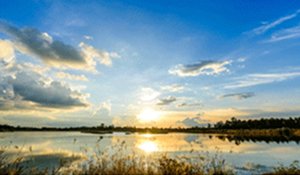
J U N E 2 0 2 1
Now that I am old my thoughts no longer hold the certainty they had, instead they open like a river delta does, spreading to the sea, slow calm channels where grasses bow and water birds float and dive and make their homes. The torrent of my beliefs has eased, thank God, and I no longer need to convince anyone of anything. You and they will find your way.
ocean sunset 2I only want to say how good it is and how good you are, as you try to make things better, how good it is that this is the way it is, and that we are not alone and never were, the same water flowing to the sea and lifting us to the clouds. It is beautiful that we have been made like this, out of mud and air, made so finely that our eyes can shine with the dearest love.
There is nothing to be afraid of.
This may be the best, the most important job we have: to assure one another that each of us is loveable, and that mercy softens every fall. Death, after all, is a fine homecoming.
As I age and slow I wonder if my life has any meaning left. It does! Meaning beyond the need for meaning, this one that drenches me with thankfulness. I am not at war with a meaningless void. There is no need for meaning, here where we glisten like raindrops in the sunlight, each drop a prism.
Something unspeakably good is shining here, some generosity so quiet and nonchalant it leaves no trace of itself yet appears as you and me and every moment created and left behind, nothing ever personal yet everything always intimate.
Mountains slide into the sea, even oceans wave goodbye, and we are not what we seem. My mother died and poured herself into my emptiness. My father followed. I join them, even now.
So shall we walk together, you and I, and watch the evening sky turn into stars? Shall we talk together about what we think is happening? It doesn’t matter if what we say is true. God after all is too holy to know, and we can be content to say our hearts have no edge and leave it at that.
Look how we are made of the warmest light! It loves us without any words.
Sabbath
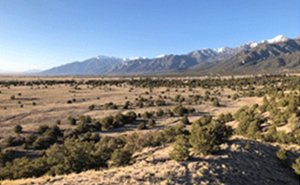
M A Y 2 0 2 1
Dear Friends,
I’d like you to know that in June I will begin a six-month sabbatical — taking a break from my steady diet of teaching, writing, planning, counseling, telephoning, and other scheduled and administrative duties. Notes from the Open Path will continue to be posted, drawing from earlier Notes that are favorites of mine. Flashes will also continue to appear on Sundays, selected from The Book of Flashes or other unpublished sayings.
sabbathAlso in June, my wife, Rabia, and I — and our cat Ariel — will be making a much-anticipated move to “West Light,” the Sufi Way’s home in the high-desert mountains of southern Colorado. The spaciousness, beauty, and peace of that land nourish my soul and will be a fitting place for my sabbatical.
The word “sabbatical” is cognate with “sabbath,” the practice of observing a day of rest and prayer, and is also related to the earliest agricultural practice of the “sabbath year” (shmita in Hebrew) in which the land was left to lie fallow every seventh year so that it might be renewed.
After 17 years at the helm of the Sufi Way, I feel a deep need to be quiet, to sit under the stars at night and listen, to walk in the mountains and let their old holiness instruct me. One of the Ten Commandments tells us to observe the sabbath and to “make it holy.” That’s the reminder I’d like to guide my sabbatical — make it holy.
To make something holy means to experience it as sacred. While that may sound a bit pretentious or grandiose to our modern ears, to me it goes right to the point. In a few months I’ll be 77 — an auspicious number! — and as the years pile up it becomes ever clearer to me how sacred and precious this life is. I want to learn to worship and praise each day as the mystic writer Annie Dillard tells us in her wild fashion:
“Every day is a god, each day is a god, and holiness holds forth in time. I worship each god, I praise each day splintered down, splintered down and wrapped in time like a husk, a husk of many colors spreading, at dawn fast over the mountains split.”
To make it holy, this fallow time, to be quiet and to silently praise the awesome gift of being here, now, within the infinite holiness of all, that’s my wish.
A loving bow of thanks to all of you who have read these missives over the years, and with blessings on your path,
Elias
Dawn
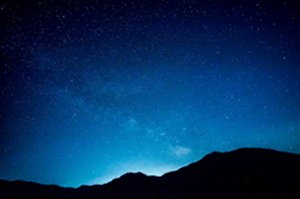
A P R I L 2 0 2 1
Here in the mountains just before dawn, the air is motionless. It feels as if the world has stopped breathing. The first faint blue light comes so quietly over the eastern peaks that nothing is disturbed dawnbelow. Nothing moves. The stalks of the wild grasses stand perfectly still. The branches of the junipers and pinions are poised in the air, waiting. The long night bows to the coming of the day.
Now the dark and the light are intimate. One dissolves into the other like lovers do. Together they’re in awe. Though the dark and the light have touched like this for countless rounds, it’s always new for them. Here in the penumbra where they are not one or the other, they share their secrets; the mystic night tells of its immensity, and the daylight tells of each particular. How they love each other! As their love-play circles the planet, caressing it, blessing it, it is always somewhere, always approaching, always welcoming, always leaving, anointing the world.
Nearby, a coyote lifts her head. And out in the valley, in a farmhouse, a woman draws open the curtains in her children’s bedroom, the sound of the opening curtains meant to wake them. She pauses, looking out east to the blue mountains and the coral light above.
The coyote stretches.
The eldest boy gets up and dresses without speaking. He goes to the kitchen and fills a bucket with water to take out to the shed for his new little goat. He pulls on his boots, his denim jacket, takes the bucket in hand and crosses the yard, the air cool and still.
The coyote looks up. The coral light of the dawn now has gold streaks through it. In the west the last few star-sparks are vanishing. In that moment, whatever it is that rises from the coyote’s heart makes her lift her nose to the sky and sing one long, wavering note.
The boy stops in the middle of the yard, tilts his head. What was that? He stands still, listening. Now he sees the quiet glory in the sky above him. An unexpected feeling comes over him, a feeling he hasn’t felt before but that’s somehow wholly familiar. It’s as if the ground beneath his boots and the pink sky above the barnyard and the electric light from the kitchen window and the shuffling of the cows in the barn and him standing there, bucket in hand, all belong, all at once, together, like in some great loving hymn of home.
The coyote cries out once more. This time the boy recognizes what it is. He tilts his head back and hollers out in answer, Ohwoooo!
Emptiness, Death, and Coming Home
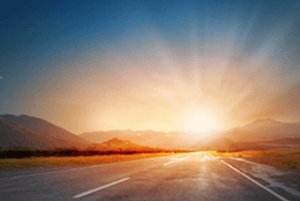
M A R C H 2 0 2 1
When I was seventeen I left home. I filled a knapsack with camping gear and clothes and tied it onto the back of my little 125cc Vespa motor scooter and headed west across America. I felt courageous as I putted along on back roads that first day, freed from my emptiness roadchildhood and excited to find the adventures that lay ahead. When evening came, I pulled over into a rural cemetery and found a place out of sight where I could pitch my pup tent.
After eating a sandwich and the last of my mother’s cookies, I leaned back against a gravestone and watched the shadows of night approach. That’s when it hit me: the most unbearable fear and homesickness. I wasn’t afraid of the dead buried around me; I was afraid of the emptiness I had launched myself into. No mother, no father, no comfortable old house around me, no cozy bed, nothing to remind me who I was. I was alone in a terrifying, empty aloneness.
Zen master Katagiri Roshi describes emptiness as “the eternal heart of human existence,” and the direct experience of emptiness as “nothing to depend on.” That’s how it felt to me in that cemetery: there was nothing I could depend on, and it was scary.
Speaking to Zen students just starting out in their practice, Katagiri explains this state:
"You are scared because you see and touch the bottom of human existence, which is based on emptiness, but simultaneously your human consciousness understands that emptiness objectively. The objectivity of your conscious mind sees your life as separate from that nothing, and it makes you scared. Maybe nothingness looks like an abyss, or a black hole that will suck you in. You are in despair; you feel everything is in vain. But in that moment there is a great opportunity, because you are in the very incipient stage of tasting emptiness directly through your experience. So keep going!"
Even though at seventeen I would have had no idea what he was talking about, I did keep going.
In the following years I repeatedly came to the edge of that same scary place I experienced in the cemetery—I seemed almost drawn to it. Psychedelics and then spiritual practice kept bringing me there. And yet I was certain that beyond that edge was a self-obliterating emptiness, death itself, and when it came close I recoiled in fear.
It wasn’t until I could walk into that fear—or let it walk into me—and not recoil, that I glimpsed what Katagiri meant: emptiness is the eternal heart of human existence. Emptiness isn’t a nullity, a voidness of being. It is Being itself: clear, open, aware, and infinitely present. The experience of emptiness is indeed self-obliterating—that’s what feels scary about it—but what is obliterated has all the reality of a dream. What’s “left” is home: the true home of me, the true home of you: clear, open, aware, present. It’s not a home with walls; it’s not a place or thing of any kind, and yet it is utterly familiar, more familiar than any worldly home we’ve ever lived in.
It’s been sixty years since I leaned back on that gravestone in the cemetery. Now the long scooter ride of my life is heading into its final distances, with death my last stop. I understand how scary death is for many of us—the prospect of vanishing, the end of all we’ve known—emptiness!
Since I talk a lot about this business, I’m often asked, “But what actually happens when we die? Is there a heaven? Do we “go home” like people say? Is a divine home going to be there when I die?”
Every cell of my being assures me that it will, yes. But it’s not like we think. It’s not a destination; it’s not a home beyond, a home separate from us now in space and time. We don’t actually “go to a there”: we come to here. Death, emptiness, self-obliteration is a homecoming, not a homegoing. As Rumi tells us:
On the day I die, when I am being carried toward the grave, don’t weep. Don’t say, He’s gone. He’s gone. Death has nothing to do with going away. The sun sets and the moon sets, but they are not gone. Death is a coming together…
Just as I had to walk into my fear of emptiness, the voiding of my sense of being a me, in order to glimpse the eternal heart of human existence that’s been here all along, so too do we all have to walk into the fear of death, of vanishing, to realize that the divine home beyond death has been here all along: right here, now. Death has nothing to do with going away.
We’re home, already. I believe that coming home as we die is the same homecoming that we experience in our moments of spiritual realization. Nothing moves. It’s here. We’re already home.
True Illusion
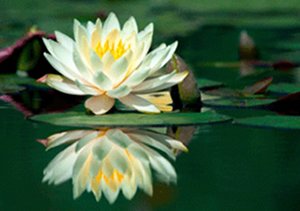
F E B R U A R Y 2 0 2 1
My little cat jumps into my lap as I start to write. I sit back to give her space. She curls in a spiral like a nautilus shell, closes her eyes, and sleeps. She doesn’t know what is happening. She doesn’t know about the pandemic. She doesn’t know how much we humans miss seeing each other’s smiles, hidden beneath our masks.
lotus reflectionHer ears flick slightly. I think she’s dreaming. Whatever she’s dreaming about seems real to her, at least until she wakes up. Then another “reality” will appear to her which she’ll accept as real. To me, both her dream-reality and her waking-reality—if I could experience them—would likely seem partial, limited, not the “true” depiction of the world that I have. They would seem to me dream-like—brightly apparent, yes, but fictive, not really existing in the way they seem to exist to her.
But what’s to say that’s not also true about my own waking-reality? I know the dream I had last night was not real, at least I do now, but what about this waking-reality? Could it also be dream-like—a fictive illusion created by my own limited interpretation of what’s happening, just the same as my cat’s limited interpretation of what’s happening?
How do we tell what is real? We measure the space between things, we knock on wood, we stroke the cat, we count the time between one event and the next, and by all this evidence we become confident there is a real world out there that exists as we perceive it. My lap, the cat, my neighbor’s garage, the sun climbing into the morning, all truly existing.
But then, what do we make of these lines from Rumi:
Out of unconditional emptiness
comes this planet with all its qualities.
Is this true? If it is, if “this planet with all its qualities” comes out of unconditional emptiness, it must be doing that right now, not just in the primordial past. This moment with all its attendant perceptions spontaneously appears, but how? From where? And doesn’t it instantly vanish, right now, back into “unconditional emptiness? In the infinitely short duration of the present instant, can any of this that is appearing really claim “existence”? Perhaps what we assume to be reality actually is a kind of dream, a mirage, an evanescence no more substantial than the play of light on the surface of a pond, or the changing shapes in a mirror?
This radical form of inquiry and contemplation is at the heart of the Dzogchen tradition of Tibetan Buddhism. While present in early Buddhist sutras and the teachings of the 2nd Century Nagarjuna, it was precisely described as a practice by the 14th Century master Longchenpa in his famous manual Finding Comfort and Ease in Enchantment. (There are several translations of this text available; Keith Dowman’s translation entitled Maya Yoga is, in my view, the most accessible, poetic, and illuminating.)
Longchenpa’s text gathers eight analogies to help describe our ephemeral experience of reality: it is like a dream, like a magical show, like an optical illusion, a mirage, the reflection of the moon on water, an echo, a magic city, an apparition. With each analogy he prescribes the same basic practice: that we apprehend all our experience as maya, illusion, mirage, a magic show, etc. Here he describes the dream practice:
The outer world, its mountains and valleys, villages and towns and its living beings, compounds of earth, water, fire, air and space, all forms, sounds, smells, tastes and sensations, the five sensory objects, and the internal world of body-mind and its sensory consciousness, all experience, should be attended to incessantly as dream.
It’s not surprising that our minds rebel at this suggestion. We’re not ready to concede that the world of phenomena around us—and that we’re part of—is a dream. Surely not! This great heavy earth, the oceans, the mountains…
And then once more, Rumi drops this on us:
The here-and-now mountain is a tiny piece of a piece of straw blown off into emptiness.
If this is true of the mountain, what about all the suffering in the world, the pandemic, the wars, the bombs slamming into buildings—are these also a dream, blown off into emptiness? And the people we love, our children and grandchildren, the work we do, everything we hold dear—are these a dream? Doesn’t this practice of apprehending all experience as dream diminish the value, depth, and joy of life?
Here I can only say, try it. Try attending to all your experience as dream, at least for short bursts. See what happens. In my experience the value, depth, and joy of life is not diminished by this practice, in fact just the opposite. But descriptive words here about “what happens” when you attempt this practice are not very helpful. Just try it yourself and see.
This maya yoga—attending to all experience as maya—is known as one of the most direct “short-cuts” in Dzogchen. In attempting it, you may sense for a brief moment something of what Longchenpa calls a state of “empty clarity” that shimmers “with an unbroken natural happiness.” Curiously, in that empty clarity the world doesn’t go away just because it’s seen as evanescent. After all, in a lucid dream when we’re sleeping—when we wake in the dream and know it’s a dream—the dream-world doesn’t disappear. We remain in its “enchantment” but we’re no longer bewitched by it. We’re at ease, as in Longchenpa’s title: finding comfort and ease in enchantment.
Peter Fenner, the Buddhist nondual teacher, once remarked that an illusion is illusory only as long as we are fooled into believing it is real. When we recognize our perception of reality is an illusion it ceases being an illusion! It becomes what I call true illusion, and the comfort and ease that ensues has a playful quality to it: we are unattached to the dream but intimately and compassionately responsive with it, “at play in the fields of the Lord.” Or as Keith Dowman writes, “To regard every situation as a magic show is simply to relax and enjoy it.”
Of course, our capacity to do this is weak; we’ve spent our entire lives asserting that the phenomenal world is real, not a dream or a magic show. Now and then we may get an intuition of this comfort and ease, but the density of apparent reality quickly reconstitutes itself. Remember what the old Taoist sage Chuang Tzu said:
Only after the great awakening will we realize that this is a great dream. And yet fools think they are awake, presuming to know that they are rulers or herdsmen. How dense!
So you and I, writing and reading this together, what are we? How can we understand this? Are we real? Are we a dream? What are we?
Let’s give Rumi the last word:
We are the night ocean filled with glints of light. We are the space between the fish and the moon, while we sit here together.
Mother Water
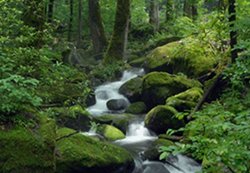
J A N U A R Y 2 0 2 1
At this time every year in a place beyond roads, far up in the hills near the Laotian border, a shaman calls the people of his village to gather next to a rivulet of water.
The water comes from the rain dripping out of broad-leafed trees and running down their trunks into the ground, reappearing in this fold of land where the villagers have assembled. They know they are guardians of this sacred place, the very top of the watershed.
mother waterThe shaman performs a ritual over the water with prayers and songs joined by the villagers. Children play underfoot, happy that everyone is happy. This day is the annual ritual when the village asks forgiveness of the goddess Mother Water for all the waste the villagers have put in the water during the past year, asking forgiveness too for the pollution that people downstream from them have added as the water made its way to the Gulf of Thailand.
Once forgiveness is asked for, the shaman invokes blessing on the waters, asking that health and well-being be granted to all the growing things and creatures and people who will drink of it on its journey to the sea throughout the coming year.
We who don’t believe in goddesses of the water or other such spirits, we who are content with our scientific views of how reality works, do we not also maintain a remnant of this same ritual at the beginning of the year, despite how worldly-wise we are? After all, we call out to our neighbors “Happy New Year!” and mean it, we wish everyone well, we get extravagant and kiss each other, we take the day off, we set off fireworks, hooray for us! hooray for life!
Like the villagers at the top of the watershed, we believe—at least for a few moments—that we can start life afresh, throw off the habits we’ve accumulated and the old ways of thinking and behaving, and begin again. In particular we know how rough the past year was—2020—plagued with suffering, isolation, loss, limitation, injustice and divisiveness, like pollution cast into the waters, and we ask that it be done with, finished, and forgiven. We don’t ask a goddess, but we do ask.
“Happy New Year!” We sail that wish into the air between us, a generous blessing on the spirit-waters that will flow through the coming seasons. Something kind and resurgent in our nature believes that our wish for happiness and well-being for others will be carried downstream, as if our hearts are the top of the watershed and whatever the current is that carries that blessing will find its way to those who need it most.
Like the shaman and the villagers, may we know that we too are guardians of this sacred place and of each other, and that our prayers (for what is Happy New Year! but a prayer?) our prayers are not trivial sayings but carry something essential for our own hearts and for the sustenance of life everywhere.
Happy New Year!